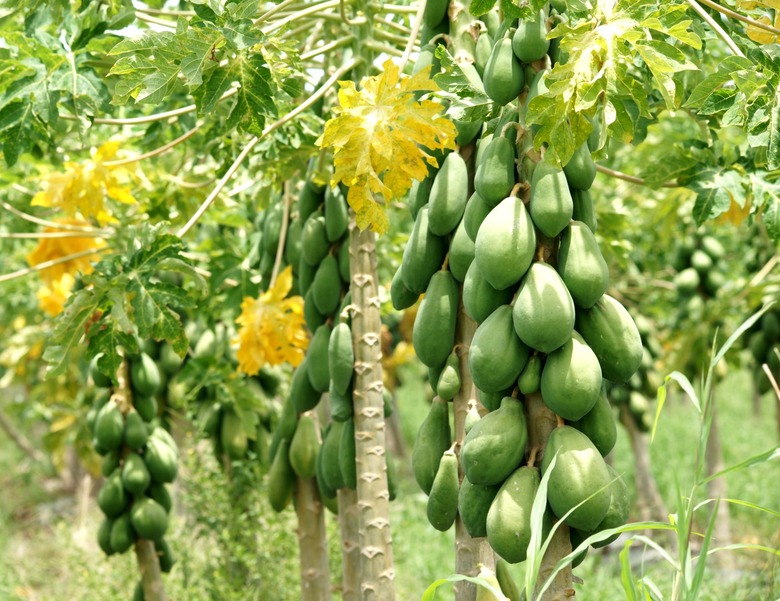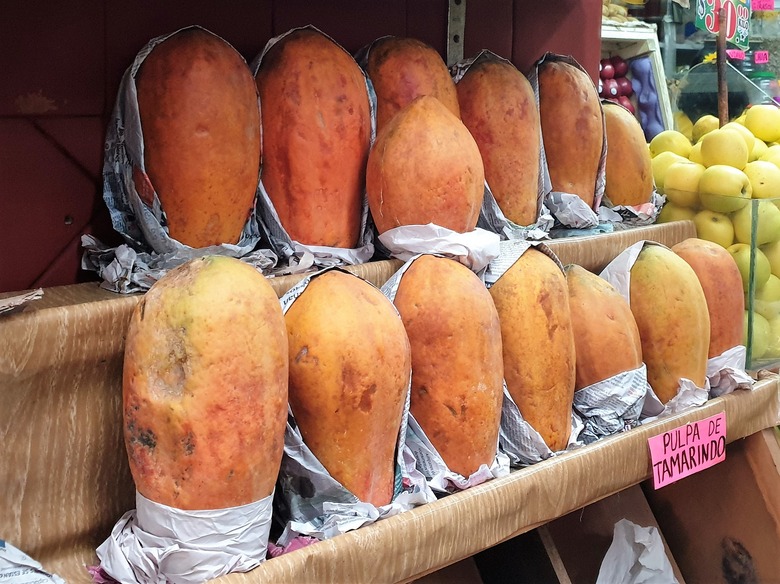How To Know When A Papaya On A Tree Is Ready To Be Picked
A green papaya is not a ripe papaya, and if you pluck it when entirely green, it will never ripen to a sweet flavor. On the other hand, if you leave a papaya on the tree until fully ripe, you are unlikely to be the one who gets to enjoy it, as birds or fruit flies will get there before you.
There is nothing quite like the papaya fruit (Carica papaya, USDA hardiness zones 10 to 12), so it's worth paying attention to the color of those pendulous fruits so that you don't miss the harvesting window.
A Green Papaya Will Always Be Green
The term "color break" is an important one when it comes to harvesting these tropical fruits because **a fully green papaya—one that is full size but has no tinge of yellow at all—will never ripen.** This is important because a mature papaya that is completely green will still be the same size as the one next to it displaying a flash of yellow, but don't pick it yet!
Tip
If you want to consume the papaya as a veggie, green is appropriate. Green papayas are often sauteed or used in curries.
Types of Papaya
There are two primary types of papaya, and the color of their flesh differs. The most commonly available in the U.S. is the Hawaiian papaya, also called the Solo, originating in Central America. Their flesh is either bright orange or pink, and they have small black papaya seeds.
Then there are Mexican papayas, sometimes called Asian or Caribbean papayas, usually available in specialty Latino markets. These can grow quite large, up to 10 pounds, with flesh that is yellow, pink or orange.
Either type is commonly used in smoothies and fruit salads or eaten fresh off the tree. Both are high in vitamin C and other antioxidants.
When Is a Papaya Ripe?
Once a papaya has even the tiniest tinge of yellow, usually occurring first on the stem end, commercial growers might harvest it, but home gardeners should wait until it is about 3/4 yellow or even more because papayas reach their full sugar content only when on the tree.
The University of Hawaii maintains a webpage with photos of the various stage of ripening, which can be useful for identifying the exact stage at which you should harvest your papaya. The info is specific to commercial growers but helpful to homeowners as well.
While a papaya may continue to deepen its yellow color after harvest, it will not become any sweeter during this post-harvest ripening process.
Tip
A green, unripe papaya does not get any sweeter after harvest.
Ripening Slightly Green Papayas
If you have harvested your papaya when still somewhat green or have purchased a still-predominantly green papaya at the grocery store, the best way to ripen it is by placing it in a paper bag at room temperature. This will speed up the ripening process and soften it, but it will not make it sweeter.
Once ripe, a papaya's shelf life is short, so place it in a plastic bag and refrigerate it. The papaya will keep for about three days.
References
- University of Hawaii: Papaya
- University of Florida IFAS Extension: Papaya Growing in the Home Landscape
- Missouri Botanical Garden: Carica Papaya
- UC Davis: Fruit Product Facts, Papaya
- University of Hawaii: Proper Fruit Selection During Harvest Improves Market Value
- University of Arkansas: Papaya – A Strange Name but Sweet Flavor

